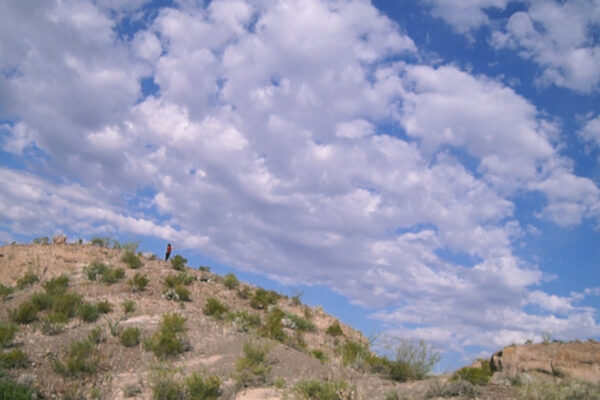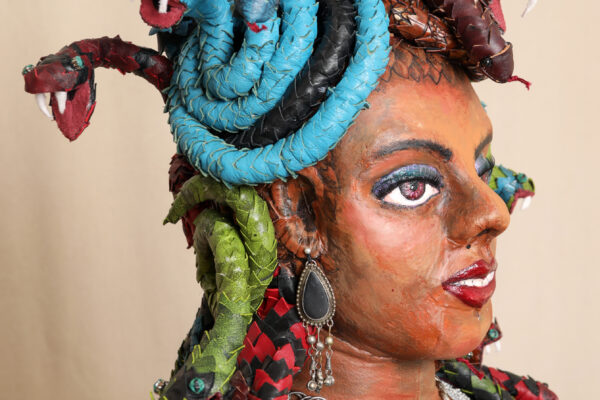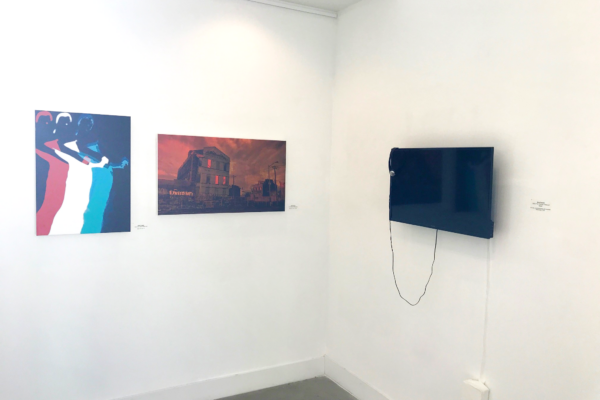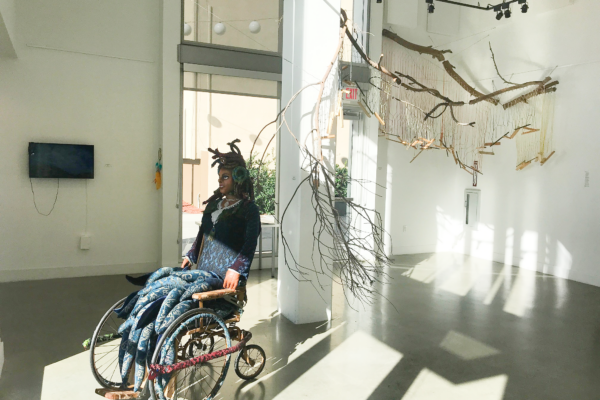February 22 - March 29, 2019
There's No End to Her
Twentieth century landscape painting pictorially introduced the world to the concept of “Manifest Destiny.” The images of the Hudson River School illustrated the ideal of western expansionism, implying it was the right of men to colonize and appropriate all of nature across the Americas. The division of land, separation of animals from their habitat and the displacement of Indigenous people from their tribal land all took place under the pretense of logic and progress. Nature in all its expansiveness and mystery were seen as a constant threat, a permanent “other” to be subjugated and tamed by white male reason. Feminine nature in the twentieth century had a similar fate: women who held the wisdom of the seasons and the stars or administered healing herbs were burned at the stake as witches. Midwives were removed from childbirth. Women whose personalities were lacking in self-control and discipline were relegated to the realm of hysterics and very often creative women were thrown in to mental asylums.
This expansion and colonialism via white male domination has become embedded in “American” culture, from entertainment to medicine, played out on our screens, reinforcing the archetype of the white male hero who has come to rescue us from threat and its perpetrators – “super predators.” In successfully severing us from our connection to our Mother, our homeland, our feminine power, we are left to the mercy of white heteropatriarchy, which has long since been consumed by greed.
In a time when Los Angeles County wants to spend $3.5 billion to expand the already-largest jail system in the world, tar sands pipelines are being forced onto Native American territory and national parks disappear as they are auctioned off to the highest bidder, we are in constant peril. In light of such events as the disastrous and blatantly-racist EPA response to the Flint water crisis mirrored by the tragedy of the US removal from the Paris Climate Agreement, practices of intersectional feminism toward our natural environment are more relevant than ever.
There’s No End to Her seeks to decolonize the imposed separation of self to nature. The works exhibited present a feminized version of both the Earth and our relationship to it, in stark contrast to the violent and oppressive vision of a colonialist planet. Rather than being gendered as female, the artwork in There’s No End to Her is a fluid interpretation of the word “feminine,” here defined as an appreciation for the intuitive relationship of a person – and body – to environment through an unrestricted connection to landscape. Eco-Feminism as defined by Mary Mellor is, “… a movement that sees a connection between the exploitation and degradation of the natural world and the subordination and oppression of women…” Though the eco-feminist movement itself dates back to the third wave of feminism, the political era we currently live in desperately calls on each of us to reincorporate a commitment to stewardship of the natural world as a necessary part of our feminism.
#MakeNoiseForPeace
– CandyJoe Dahlstrom, resident and curator & Ben Evans, ace/121 Gallery director








